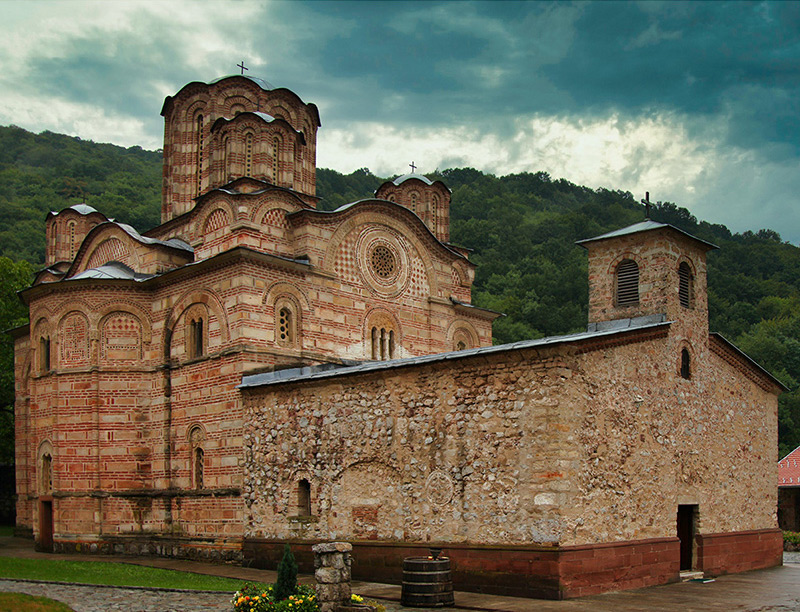Serbian Medieval History
Monastery Ravanica

BLAGO Collection
Built in 1370. and the 1380s, Ravanica is the famous Prince Lazar's foundation, where he was buried after his death in the Kosovo battle.
Since then, Ravanica has been a pilgrim's destination and an important center of cultural activities and the Serbian people's assemblies. The monastery has been assaulted and injured by the Turks several times, in 1386, 1398. and in 1436. In the great war after the second siege of Vienna a number of monks got killed and the rest of them, in 1690, took the relics of the sainted Prince Lazar withdrawing, in front of the Turkish offensive. Only in 1717. the only survived among the monks, Teacher Stefan came back in Ravanica and found the monastery looted and deserted. With the help of the local inhabitants, he restored the monastery and built a new narthex.
The monastery suffered repeated assaults during the Serbian revolution, at the beginnings of the XIX c. The new restoration took place in the mid of the XIXth century. During World War II Germans violated and damaged the monastery once more time, and detained, tortured, and killed its archimandrite Makarije on February 24. 1943.
The Ravanica church is the first monument of the Morava School of Serbian medieval art. Its ground plan has the form of an enlarged trefoil with a nine-sided dome in the middle and four smaller octagonal domes above the corner bays. There are 62 window lights. The church was built in alternate courses of single-line stone and three-line bricks. Valuable ceramic decoration makes use of geometrical patterns, floral motifs, zoomorphic and anthropomorphic shapes.
The frescoes were not carried out at the same time and by the same artists. They are dated between 1385. and in 1387. The middle-register frescoes, which are of the highest artistic value were painted by two artists, one of them known as Constantine, who left his signature on a fresco of a warrior saint. The noteworthy compositions include the Communion of the Apostles and the Adoration of the Lamb in the altar apse, as well as the festival Cycle in the upper registers of the church.
Others
Others
More Information
BLAGO Content
While the content of the BLAGO Fund collections is free to use, there are also some restrictions on commercial use and proper attribution of the material. Follow the links below for more information.
> BLAGO Collections License
> Image Request
BLAGO Fund also accepts the contribution of material. Please contact us with any material you wish to publish on our website.
Contact
BLAGO Fund, Inc.
PO Box 60524
Palo Alto, CA 94306
USA
info@blagofund.org

